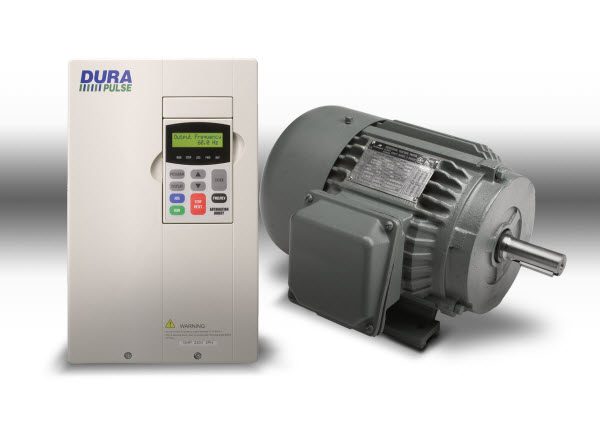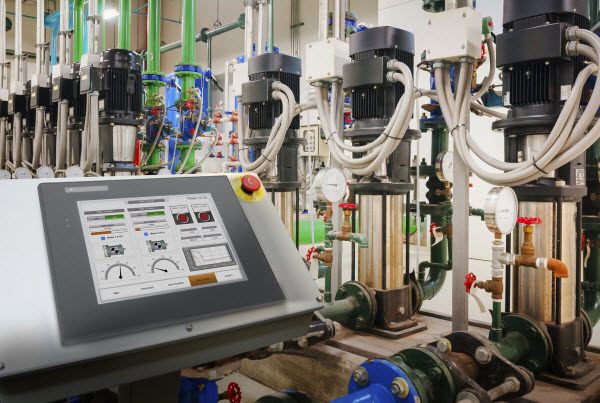The Energy Policy and Conservation Act (EPCA) of 1975 marked the beginning of energy conservation standards for industrial, commercial and consumer products and equipment. The U.S. Department of Energy (DOE) created 60 plus categories of applications and equipment, affecting 30 percent industrial energy use.
 The EPCA includes industrial applications such as motors, pumps, compressors and blowers. Specific energy efficiency rules for these devices are found in Code of Federal Regulations at 10 CFR, Part 431—Energy Efficiency Program for Certain Commercial and Industrial Equipment.
The EPCA includes industrial applications such as motors, pumps, compressors and blowers. Specific energy efficiency rules for these devices are found in Code of Federal Regulations at 10 CFR, Part 431—Energy Efficiency Program for Certain Commercial and Industrial Equipment.
While you have probably heard about the motor efficiency rules implemented over the last several years, there are more rules to follow. The DOE continuously creates or amends efficiency requirements. As part of its four-phase rulemaking process, the DOE is looking at pumps, fans, blowers and variable frequency drives (VFDs). Here’s a peek at the existing motor efficiency rules, and at a few new rules in progress related to motor/drive systems and pumps.
Use Premium Efficiency Motors
Whether replacing a motor or installing a new motor in a pumping application, high-efficiency motors must be used. The new rules require it. The motor efficiency rule for 10 CFR Part 431, Subpart B made final in May of 2014 was recently completed and became effective June 1, 2016. A big change was the eliminating of loopholes in the rule, so now most 1 to 200 hp single-speed induction motors must meet NEMA Premium efficiency levels.
Another standard, 10 CFR Part 431, Subpart X—Small Electric Motors, covers ¼ to 3 hp motors, creating some overlap in the rules between 1-3 hp. This small motor standard sets minimum efficiency requirements affecting many applications such as pumps and heating, ventilation and air conditioning. This rule will likely expand to cover many of the current special-purpose motor exemptions.
To comply with these standards, AutomationDirect has you covered with nearly 150 premium or ultra-high efficiency motors available from fractional to 100 hp.
AutomationDirect also strongly supports using VFDs to control motor speed in pumping applications due to the potential for 50% to 80% energy savings. While VFDs can lead to big energy savings in certain applications, the DOE efficiency program does not provide an efficiency standard for VFD, soft-start or similar motor control technologies, with only across-the-line motors included.
In fact, inverter-duty motors are exempt as well, but many meet premium efficiency standards. Although exempt, using an inverter-duty motor and a VFD is still an excellent option for energy savings. At this time, only voluntary standards exist such as AHRI 1210 and AHRI Certification Program for VFDs.

Pumping Up to Standards
Some pump applications have new rules or rules in progress from the DOE. There is a new rule for Energy Conservation Standards for Pumps, Federal Register, 81 FR 4368, issued on January 26, 2016, that becomes effective on January 27, 2020, as regulation 10 CFR Part 431, Subpart Y. As with most rules from the DOE, the new pump rule includes amended energy conservation requirements, definitions and test procedures. This rule is specifically for rotodynamic, clean water pumps used in industrial, municipal, commercial and agricultural applications.

This new pump efficiency rule takes into consideration a variety of equipment classes and design speeds, and compliant pumps must have a Pump Energy Index (PEI) less than or equal to the standard’s requirements. The standard also includes a Pump Efficiency Rating (PER) divided by a minimally compliant PER. The result is a weighted average of pump electrical input power over a specified load profile.
The efficiency rules are moving towards improving system efficiency. In this case, depending on the model of pump, a variety of calculations are used to determine the hydraulic efficiency of the pump as a function of flow at a the most efficient speed. To put it simply, the new rules will make more efficient pumps a requirement.
The DOE is just starting on rulemaking to improve circulator pump efficiency, and it has already amended a rule for dedicated-purpose pool pumps, 82 FR 5650 (January 18, 2017). The rule will take effect on July 19, 2021. It’s a new “table-in-the-rule” where a pump’s weighted energy factor at hydraulic horsepower must be greater than the calculated value in the table, but that is a manufacturer’s problem to address, not the user’s.
A part of the rule requires pool pumps to have a freeze protection timer set to one hour or less at half max motor speed or less, or the protection must be disabled. What a concept: minimize pump runtime and speed by design, or don’t even turn the pump on. Slow your motors down or don’t even turn them on, if possible, and save some energy. Go premium efficiency.
For more information, please see the article Improving Efficiency in Pumping Systems in the June 2017 issue of Pumps & Systems, authored by Bryan Sisler, Drives, Motors and Soft Start Product Manager at AutomationDirect.


